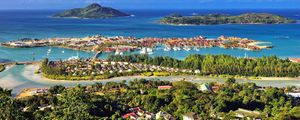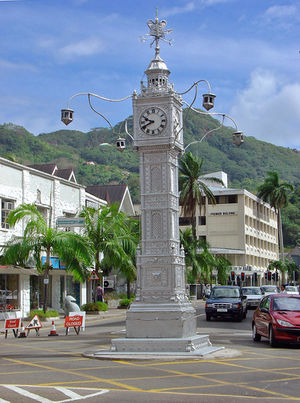Chopras
Chopras is a coastal city in Sayaffallah with a population of 375,000 people and is formerly the regional capital of the place it is situated in. Chopras is a lush jungle city with a strong contingent of indigenous monkeys that are frequently seen in the trees of the downtown and also residential areas. The principal exports of Chopras are vanilla, coconuts, coconut oil, fish, guano, pineapple, mango and papaya.
History
Early history
Chopras for a large extent of its early history was inhabited by the cannibalistic Yatwulo tribe which frequently warred with the surrounding tribes. Chopras was colonized by Orthodox missionaries in the 1430s and featured a large stone fort on the jetty extending out towards the sea which allowed for the Orthodox missionaries to establish a garrison of Orthodox soldiers who defended the city with tremendous success.
Islamic Invasion
In the 1600s Islamic armies attempted several times to overrun the city by hiding in the jungle and committing hit and run attacks. In order to prevent further attacks the Orthodox residents of Chopras burned down the jungle in a 3 mile wide radius around the perimeter of their town and then built large stone fortifications using stone from the nearby mountainous quarries to fortify and protect their city. Chopras still retains this wall around its outskirts to this day and during the time that Sayaffallah was occupied by Islamic rule this city never surrendered its Orthodox priests and is rumored to have served at one point in time as a sanctuary for the Orthodox Patriarch. To this day the Orthodox church is a vital part of this coastal community.
Revolution of 1900
As Islamic rule died following the Revolution of 1900 the city of Chopras formally voted to hand over its garrison to Sayaffallah on the condition that no Islamic influence be allowed within the city. To this day this is one of the few cities in Sayaffallah in which no mosques are permitted to be constructed due to the original Treaty of Chopras of 1905 that was signed between the city and the Sayaffallah government. After the hand over of the city the gates were removed from the city walls and the city became open to tourism on a constant basis.
1920 saw the construction of the first large scale tourist resort on the city's wharf which to this day still stands and functions as a hotel with a 900 person capacity. Chopras also saw the construction of its first airport in 1945. The formerly private Orthodox College of Chopras also opened its doors to the general public in 1960 instead of limiting admission to only Orthodox church members and devotees.
Climate
Chopras features a tropical rainforest climate (Köppen climate classification Af) with high temperatures throughout the course of the year. The capital does have noticeably wetter and drier periods during the year, with June and July being its driest months and December through February being the city's wettest months. However, since in no month does the average monthly precipitation falls below 60 mm in Chopras, the city does not have a true dry season month. This lack of a true dry season month is a primary reason why the climate falls under the tropical rainforest climate category. The capital averages about 2,000 mm of precipitation annually. Although being very rainy, skies are usually clear to partly clear and completely cloudy days remain scarce throughout the year even during the rainiest months.
Notable Residents
Faisal Raqsein who is commemorated to this day with a column in his honor in the downtown, featured on top of the column is a welded shut cup which inside contains the cremated ashes of Faisal Raqsein as he requested in his last will and testament.

